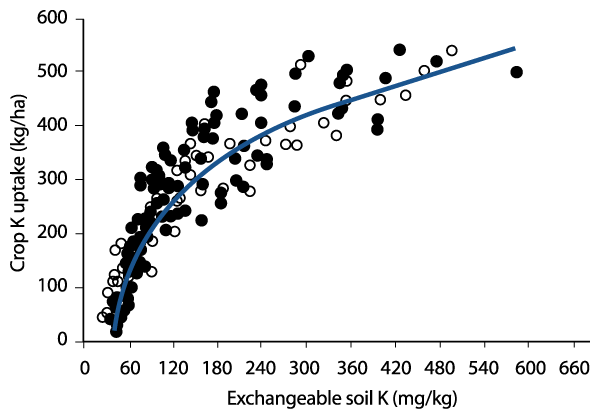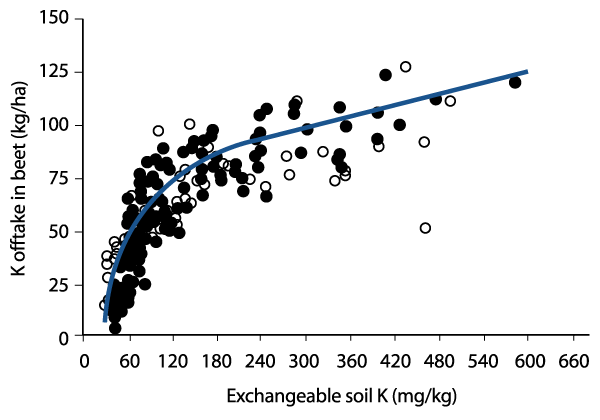Sugar beet nutrition
April 2021
Sugar beet has a large requirement for potassium, with the majority taken up during the early months of growth. For maximum sugar yield it is essential to optimise the interception of solar radiation (sunlight) to provide the energy for the conversion of carbon dioxide to sugars. This requires a rapidly expanding leaf canopy. Nitrogen drives the rapid production and expansion of cells whilst potassium is required to obtain water and maintain their turgor.
Potassium is also required to transfer sugars produced in the leaves to the storage root. In its passage, each molecule of sugar has to pass through innumerable cell membranes, and K+ ions are an essential component of the ‘molecular pump’ within the cell membranes that facilitate this passage.
Historic experiments at Rothamsted, from the 1970s up to more recently, have shown the link between clean beet and sugar yields and soil potassium availability (K index). Maximum sugar yields are achieved where soils are at or above K Index 2-, with sugar yields greatly decreased when the K Index was below this critical value.
In these experiments, where maximum yields were achieved at soil K Index 2-, uptake into the crop was in the region of 420-480 kg K2O/ha. More than 70% of the K taken up by the crop remains in the tops at harvest, therefore just 90-100 kg K2O/ha of this was removed in the harvested beet and therefore removed from the field. On soils with plentiful K, the uptakes and offtakes of K can be much larger than this optimal requirement (i.e. up to 600 kg/ha in the crop and 150 kg K2O/ha removed, respectively).
Sugar beet has a specific, irreplaceable requirement for Na and usually takes up about 50 kg/ha on a soil well supplied with K. Most of this Na is retained in the tops where it is used mainly to sustain leaf growth and canopy development.
Sulphur is an important component of proteins and enzymes and is required by sugar beet to ensure the development of a photosynthetically efficient canopy, with sulphur being important for chlorophyl production. It also helps to improve sugar quality.
Magnesium is an essential constituent of chlorophyll, which is involved in the conversion of carbon dioxide to sugars. Soils at Mg Index 2 and above usually contain sufficient plant-available Mg to meet the needs of the crop. On soils of Mg Index 0 and 1, Mg should be applied. When adequately supplied with Mg there is about twice as much in the tops as in the roots, so most of the Mg taken up by the crop is returned to the soil.



